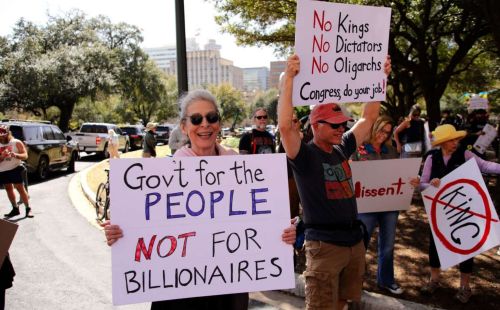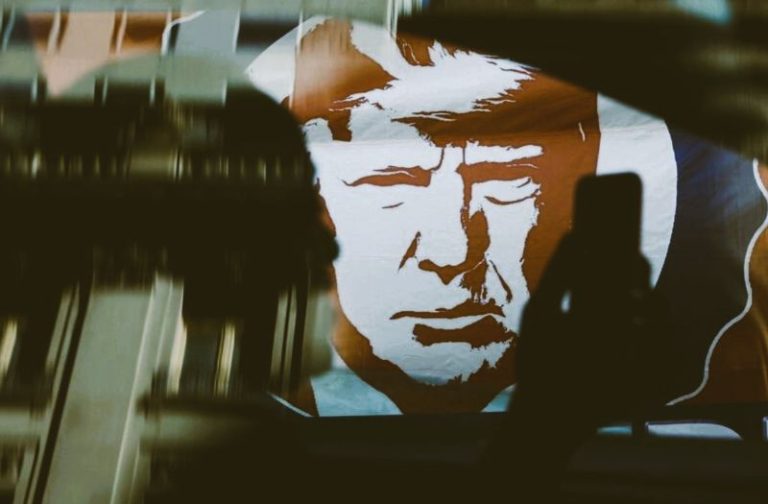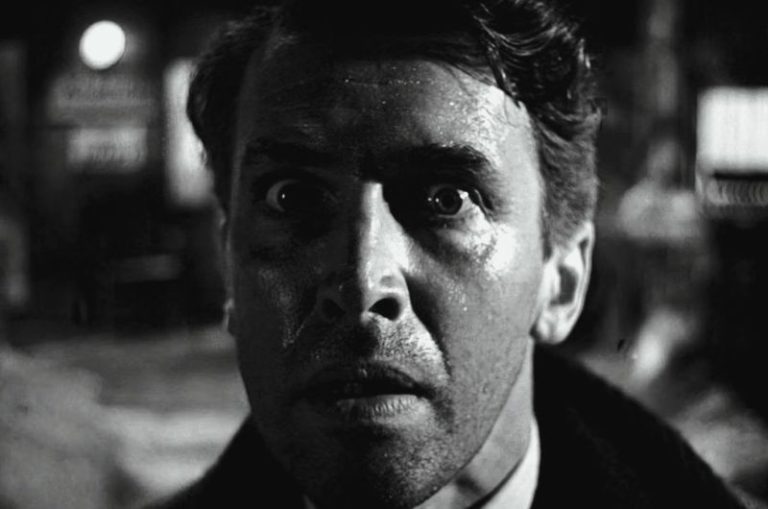

If October 18 proved anything, it is that the fight for democracy isn’t only fought in elections or courtrooms, it’s waged in the streets, on the picket lines, and in the everyday labor of those who refuse to be ruled.

By Matthew A. McIntosh
Public Historian
Brewminate
Introduction
In downtown Houston on the afternoon of October 18, a brightly colored half-mile column of protesters stretched along McKinney Street, from City Hall out into the heart of the business district. Chants of “Hey hey, ho ho, Donald Trump has got to go” echoed between the glass-and-steel towers, while passers-by leaned out of balconies, curious, supportive, uneasy. According to organizers, some 13,500 to 15,000 took part in the city’s leg of the nationwide mobilization.
But this day of action, organized under the banner of No Kings protests, encompassed far more than a theatrical display of dissent. While the rhetoric overarches a rejection of authoritarian ambitions in the second term of Donald Trump, a powerful and less-emphasized current ran alongside it: a rising class-based anger, fed by unions trying to protect their members, by federal workers now facing program cuts and layoffs, and by everyday Americans who see wealth climbing to the top while their prospects stagnate.
In the speeches and placards, references to “kings” were as much metaphor for unchecked wealth and power as for solitary office-holders. Union banners from the American Federation of Government Employees (AFGE) and the Service Employees International Union (SEIU) joined signs from federal workers displaced by agency shutdowns, signaling that for many in the crowd the crisis was not solely political, it was economic, personal and immediate.
What follows traces how the No Kings protests across the country, once primarily democratic-rights marches, have moved into the terrain of labor and inequality, bringing together not-so-disparate constituencies under the twin banners of defending democracy and defending the dispossessed.
Background of the “No Kings” Movement
The mobilization using the banner No Kings protests traces its lineage to a cross-country campaign on June 14 against perceived consolidation of power, and this latest iteration on October 18 marked a substantial escalation. Across all 50 U.S. states, demonstrators flooded streets under the “No Kings” banner, organizers estimate millions participated.
The slogan resonates intentionally with the founding American rejection of monarchy—but in this context it stands for more than literal royalty. Protesters interpret “King” as shorthand for executive overreach, elite capture of politics, concentrated wealth and a rollback of democratic institutions. As one labor leader put it, “our founders were a rebellious lot who said, ‘We don’t want kings’… and now 249 years later people are saying, ‘No, we meant it.’”
Organizers of the protest coalition include a mix of civil-rights, media-rights, educational and labor organizations. The involvement of unions, previously less central in major anti-authoritarian protest campaigns, signals a shift: the movement is not only about preserving formal democratic channels, but increasingly about confronting the intersecting terrain of economic and labor power. Ahead of the October 18 action, the large federal‐employees union American Federation of Government Employees (AFGE) announced that “frustrated feds” would join the protests over what they call the administration’s “actions”.
With this broader base, “No Kings” is evolving from a single-day street protest into what many describe as a continuous movement of resistance, challenging both the concentration of executive power and the voiding of economic agency for working people.
Class and Inequality as a Driving Force
The rallying cry of the No Kings protests on October 18 didn’t just target what participants described as creeping authoritarianism, it also echoed a deep economic grievance. Union banners and chants at the marches explicitly connected the defense of democracy with the defense of workers’ rights and economic security. As one headline put it: “Biggest US labor unions fuel No Kings protests against Trump: ‘You need a voice to have freedom.’”
Among the messages on placards and during speakers’ remarks was the idea that “kings” are not only political strongmen, but also the wealthy elite and corporate-insider networks whose power often seems unaccountable. For many protest-goers, defending democratic institutions went hand-in-hand with resisting a system that allows the rich to get richer while workers’ wages stagnate, public-sector jobs are shrunk, and collective bargaining is weakened.
In cities like Detroit, speakers explicitly tied the protest to a working-class agenda. At a local No Kings march, one speaker declared the need for “working-class independence … to fight Trump’s attacks.”
The timing of the protests heightened the sense of economic urgency. With a wave of federal program cuts, agency reshuffling, and job-uncertainty for public-sector employees, the crowd included not only traditional union members but also federal workers who feel the squeeze. According to the union American Federation of Government Employees (AFGE), frustrated federal employees announced they would join the No Kings actions in response to the “administration’s actions.”
This blending of labor and broader civic-rights activism reflects a shifting landscape in which economic inequality and concentration of power are seen as two sides of the same coin. Protesters expressed a combined message: it’s not enough to oppose “kings” in the White House if the outcome is a shrinking middle class, weakened unions, and an emboldened elite.
As the October 18 mobilization demonstrates, the movement for democracy is now reaching into the terrain of class politics, linking the voice of workers in the workplace with the voice of citizens in the ballot box.
What Happened on October 18: Scale, Local Scenes, and Atmosphere
From New York to Los Angeles, from Chicago to Austin, tens of thousands poured into the streets under the shared refrain: “No Kings!” Organizers reported coordinated events in all fifty states, with major turnouts in Washington D.C., Philadelphia, Atlanta, and San Francisco.
Each city carried its own tone. In New York, the march began at Union Square, led by the city’s Central Labor Council, before moving toward Foley Square where speakers addressed the crowd about rising inequality and the erosion of democratic norms. Teachers and transit workers marched beside environmental activists and clergy, their signs reading “We Work. He Rules. That’s the Problem.” The atmosphere was peaceful but charged, part street festival, part act of resistance. (NYC CLC)
In Chicago, protesters gathered outside Federal Plaza, the same location where demonstrations had erupted earlier in the year over agency closures. Organizers there estimated between 8,000 and 10,000 participants. A brass band from the local teachers’ union led chants between speeches that focused on Trump’s dismantling of public programs and on stagnant wages across industries.
Out West, marches in Portland, Seattle, and Los Angeles emphasized solidarity across movements: labor, environmental, LGBTQ+, and immigrant-rights groups all shared the same stage. In Portland, protesters carried puppets of gilded crowns, while in Los Angeles, striking hotel workers joined federal employees holding cardboard cutouts of closed agency signs: “Justice Dept. – Temporarily Out of Order.”
The protests were overwhelmingly peaceful, though several cities reported brief confrontations when counter-protesters attempted to disrupt marches. Local law enforcement generally maintained distance; in many cities, police unions, often politically divided, remained neutral, neither supporting nor condemning the protests.
By nightfall, candlelight vigils replaced chanting. In D.C., thousands gathered along the Reflecting Pool to listen to displaced federal employees tell their stories. A former Environmental Protection Agency worker described watching decades of environmental policy “erased overnight.” Another, from the Department of Education, spoke of feeling “exiled from service.”
The day’s mood was not one of despair, but of resolve. The protesters’ message was unified: defending democracy meant defending the dignity of work, the right to organize, and the institutions that serve the public good.
Connecting the Themes: Authoritarianism, Class, and Public-Sector Vulnerability
What began as a demonstration against Trump’s authoritarian tendencies evolved into something larger on October 18, a convergence of democratic and economic demands. The No Kings protests revealed that for millions of Americans, the concentration of political power and the consolidation of wealth are part of the same crisis.
Protesters and speakers across the country drew direct lines between the administration’s dismantling of federal programs and the rise of an economy that rewards speculation and punishes service. When Trump ordered agency closures that eliminated or froze tens of thousands of jobs, it wasn’t only a bureaucratic shift; it was a signal that entire sectors of public life could be sacrificed to political loyalty or fiscal dogma. For many workers, that message felt personal.
Union representatives made this point explicit. The American Federation of Government Employees warned that the shutdowns would “gut essential services and silence the very workers who keep democracy functioning.” The United Electrical Workers framed their endorsement in even starker terms, arguing that authoritarianism always begins with attacks on organized labor, because unions are one of the last collective checks on concentrated power.
Economists and historians observing the movement noted that this overlap of class and democratic discourse mirrors earlier moments in U.S. history: the labor uprisings of the 1930s, the anti-war and civil rights coalitions of the 1960s, and even the Occupy movement of the early 2010s. What makes No Kings distinct is its context, a protest not just against economic inequality or political corruption, but against their deliberate fusion in modern governance.
In interviews, several protesters described losing faith not only in political institutions but in the promise that public work still matters. “When they say they’re shrinking government,” one former Department of Housing and Urban Development employee told reporters, “what they’re really shrinking is our capacity to care for one another.”
By linking authoritarianism and inequality, the No Kings movement transformed from a reactionary march into a structural critique. Its participants were not just opposing a presidency; they were demanding a republic that values public service over private gain, solidarity over hierarchy, and a democracy that belongs to workers as much as voters.
Implications and Potential Follow-Through
As the crowds dispersed and cleanup crews swept the streets on the night of October 18, organizers and observers were already asking the same question: what happens next? The No Kings protest had achieved scale, visibility, and a unified message, but sustaining momentum in the face of state pressure and economic fatigue would be the real test.
Labor organizers were among the most determined to ensure that the movement doesn’t fade into symbolism. The United Electrical Workers called for follow-up assemblies in every state, urging participants to “organize where they work, not only where they march.” The American Federation of Government Employees pledged to continue advocating for reinstated programs and legal protections for laid-off federal workers. Union leaders also floated plans for coordinated strike actions if the administration proceeds with further cuts.
Analysts have noted that movements combining democratic and economic demands often evolve into long-term reform coalitions. Whether No Kings becomes a recurring mobilization or the nucleus of a broader workers’ alliance remains to be seen, but its organizational backbone (unions, civic groups, displaced public employees) gives it more staying power than most protest waves.
Politically, the protests may also influence the national conversation heading into 2026. Early polling in the days following the march showed growing public concern about agency shutdowns and shrinking government oversight, even among traditionally conservative demographics. That suggests the movement’s message is resonating beyond progressive circles, especially among voters directly affected by job losses or rising costs.
Still, challenges loom. The administration has shown little sign of backing down, framing the protests as partisan “spectacles.” Trump’s advisers have doubled down on the language of efficiency and loyalty, vowing to continue consolidating federal functions under executive control. Yet that very defiance may galvanize rather than deter the coalition forming around No Kings.
What the movement’s leaders understand, and what October 18 demonstrated, is that resistance is most powerful when moral conviction and material interest meet. Workers, federal employees, and citizens marched together not simply out of outrage, but out of recognition that democracy cannot survive on ideals alone; it requires jobs, wages, and public institutions strong enough to serve everyone, not just the few who rule from above.
Conclusion
By the time the sun set on October 18, the chants of “No Kings!” had quieted, but their echo carried far beyond the city squares and courthouse steps. What began as a day of protest against authoritarian rule became something more profound, a declaration that democracy itself is inseparable from economic justice. The people who filled the streets weren’t just rejecting one man’s ambitions; they were rejecting a system that rewards power and punishes service.
In Washington, a federal worker who had lost her job only weeks before held up a hand-painted sign that read, “We the People Still Work Here.” That sentiment captured the spirit of the movement, a refusal to surrender public purpose to private gain, or citizenship to subservience. Across states, unions pledged to continue organizing, churches and civic groups opened meeting halls for follow-up gatherings, and newly displaced government employees began forming support networks that could evolve into long-term advocacy coalitions.
The No Kings protest didn’t end with one march or one message. It marked a convergence, of class struggle and democratic defense, of labor’s voice and the public’s will. In its wake, the line between economic inequality and political tyranny has never been clearer. Whether this movement endures will depend on whether that clarity can be turned into collective power.
If October 18 proved anything, it is that the fight for democracy isn’t only fought in elections or courtrooms, it’s waged in the streets, on the picket lines, and in the everyday labor of those who refuse to be ruled.
Originally published by Brewminate, 10.21.2025, under the terms of a Creative Commons Attribution-NonCommercial-NoDerivatives 4.0 International license.


